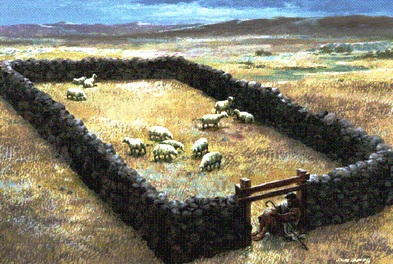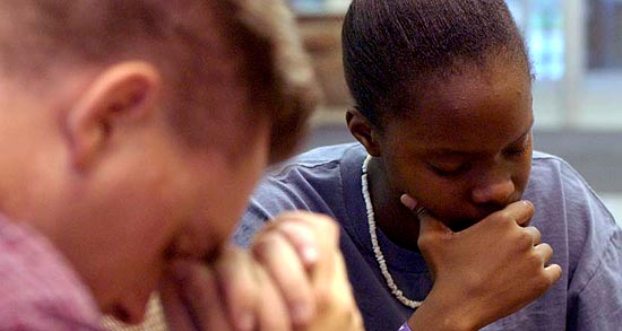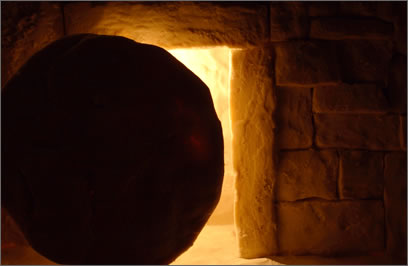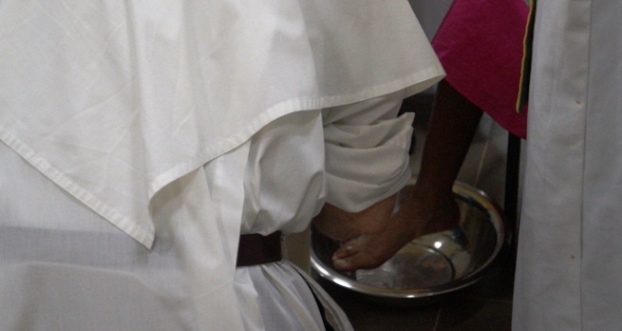I am the Gate – A very Powerful image of Who Jesus Is

 St. John has seven distinctive “I AM” statements in his gospel – I am the Bread of Life, I am the Way the Truth and the Life, I am the Resurrection and the Life, I am the Light of the World, I am the Good Shepherd, I am the Vine, and (in today’s reading) I am the Gate.
St. John has seven distinctive “I AM” statements in his gospel – I am the Bread of Life, I am the Way the Truth and the Life, I am the Resurrection and the Life, I am the Light of the World, I am the Good Shepherd, I am the Vine, and (in today’s reading) I am the Gate.
Each of these sayings symbolically represents (in kaleidoscope fashion) not just what Jesus does but who and what he is. They do not simply stand for or point to their meaning – they ARE their meaning. So, for example, Light of the World does not mean that light gives us some idea of how Jesus functions or how he enlightens. It means that Jesus is HIMSELF light; it is who tells us what light is.; he is what we see by.
This takes us the saying in today’s Gospel: I am the Gate of the Sheepfold. The sheepfold was a holding pen for the sheep at nightfall. The shepherd would lead them down from pasturing in the hills to this place of safety. The pens had walls of large stones, with briars and prickly branches on top, much like our barbed wire today, to keep out wolves and other predators. The gate to the sheepfold was the single opening to the pen, the point of access and regress, where the sheep went out (to feed) and in (to safety). It was a small entry, about two feet wide – and this is perhaps the most relevant detail, it was where the shepherd himself slept. In other words, he himself was the gate, with his rod or staff in his hands, to ward off attacks on the sheep.
The shepherd was thus literally the gate, representing for the sheep safety, security, and freedom. His presence was their guarantee. In ascribing the symbol relationally to ourselves, Jesus means us to see that he does not simply provide for us protection against harm and danger, ensuring our freedom to come and go, that is, to live expansively and freely, but that HE is our protection and our freedom. Just as ‘I am the bread of life’ does not mean ‘I provide access to life’s nourishment,’ but ‘it is I who constitutes nourishment in life.’
St. Paul has his own way of describing this relation between Jesus and ourselves, where we appropriate not simply what he does, but who he is. He uses the preposition IN. Thus, “anyone who is IN Christ is a new creation (2 Cor. 5:17).” The expression occurs over and over again in the letters. In fact, it’s no exaggeration to say that for St. Paul, being “in Christ” wholly summarizes both the journey and the goal of Christian life.
Being “in Christ” involves a spatial metaphor, and we have to translate it, laying out its existential significance, clarifying what it means to be IN someone, and thus to be IN Christ.
I think the closest analogy we have of being in someone, of personal indwelling, is our experience of love. Sexual love most obviously illustrates this, and the mystics have often described the indwelling of God with images that draw upon sexual experience. This does not mean that indwelling where sexual analogy is absent is a poor substitute. Quite the contrary. It is the more prevalent, indeed perhaps the more normative mode.
Parents dwell in their children through love; so differently do spouses, lovers, and friends. Disciples are meant to dwell in Jesus in a similar way.
“Dwelling in” refers to a form of intimate presence to the other, where speech is unnecessary, where there is a wordless exchange of being for the other, not just a willingness to “do” for the other. The Gospel has other ways of referring to this. Jesus spoke for instance of “abiding in” him or “making our home” in him. The metaphors all refer to the same thing. It means that he should be not just an object of belief but one with whom we live on intimate terms, who knows our “voice,” just as we know his.
It’s not a long way from “I am” to be “being in.” Both ways of speaking refer to what incorporation involves, how we make our own the value of Jesus for all dimensions of our lives. What he becomes for us in any area of life, depends on the depth of our personal indwelling.






